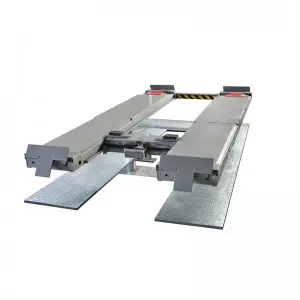Cylinders have been a crucial shape in engineering and construction for thousands of years, making their mark on history in various ways. From the earliest civilizations to modern industrial innovations, cylinders have played a pivotal role in shaping the world we live in today.
One of the earliest known uses of cylinders can be traced back to ancient Mesopotamia, where they were used in the construction of irrigation systems. The Babylonians, known for their advanced engineering skills, utilized cylindrical bricks made of clay to create efficient canals that helped sustain their agricultural pursuits. These cylindrical bricks were not only functional but also served as a symbol of the civilization’s ingenuity and progress.
As civilizations progressed, so did the use of cylinders in various applications. The ancient Greeks, for example, embraced the cylinder as a foundational shape in their architectural designs. The famous Columns of the Parthenon in Athens, with their cylindrical form, are a testament to the Greeks’ understanding of the strength and stability that cylinders offer in construction.

The Fascinating History of the Cylinder: From Ancient Mesopotamia to Modern Engineering Marvels
The Romans further advanced the use of cylinders in architecture with the invention of the concrete cylinder. By pouring concrete into cylindrical molds, the Romans were able to create sturdy foundations and structures that could withstand the test of time. The cylindrical shape of aqueducts, bridges, and amphitheaters was a key element in the Roman architectural legacy that still inspires awe today.

The Fascinating History of the Cylinder: From Ancient Mesopotamia to Modern Engineering Marvels

The Fascinating History of the Cylinder: From Ancient Mesopotamia to Modern Engineering Marvels
Fast forward to the industrial revolution, and cylinders took on a new significance in the world of manufacturing. With the invention of the steam engine, cylinders became essential components in powering machines and revolutionizing transportation. The steam engine’s piston and cylinder design paved the way for the development of steam-powered locomotives, ships, and factories, propelling the world into a new era of innovation and progress.
In the modern era, cylinders continue to be vital components in a wide range of industries, from aerospace to automotive engineering. In aviation, cylinders are used in the design of aircraft engines to convert fuel into mechanical energy, enabling planes to soar through the skies with precision and efficiency. In the automotive industry, cylinders are the heart of internal combustion engines, powering cars, trucks, and motorcycles with unparalleled performance and reliability.
Not limited to large-scale applications, cylinders have also found their way into everyday consumer products, from soda cans to batteries. The cylindrical shape of soda cans allows for easy storage and transportation, while the cylindrical design of batteries maximizes efficiency and power output in portable devices. Cylinders have truly become an integral part of our daily lives, often unnoticed yet indispensable in so many ways.
In conclusion, the history of the cylinder is a testament to humanity’s ingenuity and creativity in harnessing the power of geometric shapes for practical and aesthetic purposes. From ancient civilizations to modern engineering marvels, cylinders have left an indelible mark on history and continue to be essential elements in shaping the world we live in today.quickjack portable car lift
